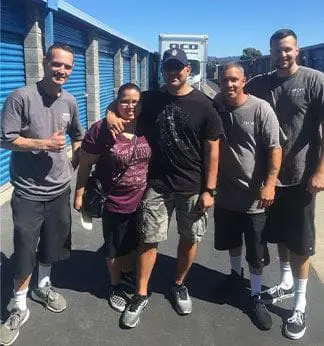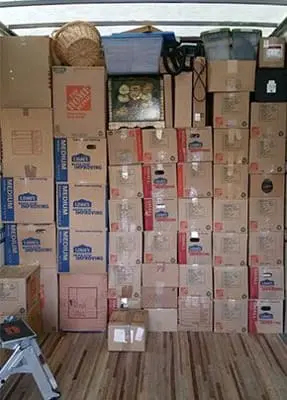The Ultimate Moving Preparation Checklist
April 11, 2024 moving
Are you getting ready to move to a new home? One of the keys to a successful and stress-free move is proper preparation. By creating a moving prep checklist, you can ensure that you have everything in order before the big day arrives. In this blog post, we will provide you with the ultimate moving preparation checklist to help you plan and execute your move with ease.
Assessing Your Inventory for a Smooth Move
Initiating your moving process with an inventory assessment is a crucial step that cannot be overlooked. Begin by methodically going through your possessions, room by room, to evaluate what you own. This meticulous approach not only aids in deciding what to pack but also identifies items that might be better off sold, donated, or disposed of. As you compile your list, organize your belongings into categories. For instance, group all kitchen items together, keep all living room decor in one category, and so forth. This organization strategy will streamline both the packing and unpacking phases.
For items that hold sentimental value or are of high monetary worth, consider creating a separate list. These items may need special attention during the move, whether it’s additional insurance coverage or specific packing instructions to ensure their safety. Photographing these items can also be beneficial for insurance purposes and to assist in keeping track of their condition through the moving process.
Equally important is identifying large, cumbersome items that might necessitate special handling or disassembly. Whether it’s a family heirloom dresser or a high-tech home theater system, knowing in advance allows you to communicate specific needs to your moving team and arrange for the appropriate tools or services.
By taking the time to thoroughly assess your inventory, you’re not only preparing for a more organized move but also paving the way for a smoother transition into your new home. This critical step lays the foundation for a well-planned packing strategy, ensuring that nothing is left behind or forgotten in the chaos of moving.
Essential Packing Supplies You’ll Need
When embarking on the packing phase of your move, having the right materials on hand is critical for safeguarding your belongings. Start with a variety of boxes in different sizes – small boxes for heavier items like books and dishes, medium-sized boxes for bulkier yet lighter items, and large boxes for bedding and curtains. Invest in sturdy, high-quality packing tape to securely seal these boxes and prevent them from opening during transit. When you move with OCD Moving Services, you will have the option of selecting various packing supplies and having the entire process taken care of for you
For fragile items, bubble wrap and packing paper are indispensable. Wrap each piece individually with bubble wrap, securing it with tape, and use packing paper to fill any gaps in the boxes, ensuring your items won’t shift and bump into each other. For items like glasses and stemware, consider specialized dividers that offer extra protection.
Labeling is another crucial aspect of packing. Use a permanent marker to clearly label each box with its contents and the room it’s destined for. This not only aids the moving team in placing boxes in the correct locations but also simplifies the unpacking process for you. For added efficiency, color-coding labels by room can provide a quick, visual guide for both you and the movers.
Lastly, don’t forget to have a small toolkit on hand for disassembling furniture. Having screwdrivers, wrenches, and pliers readily available can save time on moving day and ensure your furniture is packed safely and compactly. With these supplies and a bit of preparation, your belongings will be well-protected and ready for a seamless move.
Preparing Your Items for the Moving Team
When you enlist the services of a company like OCD Moving Services, part of your responsibility is ensuring your items are ready for the move. This means more than just having everything boxed up. Begin by dismantling any furniture that can be broken down. This not only makes transportation safer but also optimizes space within the moving truck. Keep all screws, bolts, and small parts in labeled bags, attaching them to their respective furniture pieces or keeping them in an easily accessible box that travels with you.
Next, focus on securing your fragile items. Beyond the standard wrapping and padding, consider reinforcing the bottoms of boxes containing particularly delicate pieces with additional tape for strength. Clearly mark these boxes as “Fragile” on multiple sides to alert the moving team to handle them with extra care.
Ensure that boxes are not overloaded; a good rule of thumb is to keep each box’s weight manageable for one person. This prevents box breakage and personal injury. It’s also crucial to sort boxes by their contents and destination room. Such organization expedites the moving process, as movers can systematically unload and distribute boxes without constant direction.
For electronics and appliances, take a moment to snap pictures of complex wiring setups for easy reassembly later. Secure cords and remotes to their corresponding devices, either by taping them directly or placing them in a clearly marked bag.
By meticulously preparing your items, you not only facilitate a quicker, safer move but also aid the OCD Moving Services team in providing the best possible service on moving day.
Scheduling Your Move with OCD Moving Services
Arranging the logistics of your move with OCD Moving Services is a pivotal step in your moving process. This involves more than simply picking a date; it’s about ensuring that every aspect of your move is seamlessly integrated with the expertise and resources of OCD Moving Services. To begin, reach out to the company with your preferred moving dates in mind, but be flexible if adjustments are needed based on availability or specific moving requirements.
When you make contact, provide a detailed overview of your moving needs. This includes the size of your current home, the volume of items to be moved, any items requiring special care, and the distance to your new location. Sharing the results of your inventory assessment can be particularly helpful in this stage.
Discuss any additional services you might need, such as packing assistance, storage solutions, or specialized handling for valuable or oversized items. Transparency about stairs, elevators, or narrow passages at either your old or new home is crucial for planning the logistics and ensuring the moving team is equipped with the right tools and information.
Finally, once you’ve agreed on a date and the details of your move, confirm the schedule in writing. This documentation should include the agreed-upon dates, a breakdown of services, and the estimated cost of the move. Keeping a copy of this agreement will help manage your expectations and provide a reference point for any further communications.
Preparing Your New Home for Arrival
Getting your new space ready for the big day involves more than just ensuring it’s clean and tidy. Start by scheduling a professional deep cleaning of the entire house to create a welcoming and hygienic environment from the get-go. Next, prioritize the security of your new home by changing the locks. You never know how many copies of the keys are floating around from the previous owners or tenants.
Addressing the utilities is another vital step; confirm the activation dates for water, electricity, gas, and internet services to avoid any inconvenience upon arrival. If possible, visit the new home prior to the move to identify any potential issues with the layout or access points that could complicate moving in. Make note of narrow doorways, awkward staircases, or any repairs that need to be addressed beforehand.
Consider also where large or heavy furniture will go and measure spaces to ensure everything will fit as planned. If any rooms require painting or minor renovations, completing these tasks before moving day can save you the hassle of navigating around boxes and furniture.
Lastly, familiarize yourself with the neighborhood. Know where the nearest grocery store, hospital, and hardware store are. Establishing a sense of community and convenience before you even unpack can significantly ease the transition into your new home.
Final Week Checklist Before the Move
As the countdown to moving day begins, it’s critical to cover all bases to ensure a smooth transition. Start by reconfirming your appointment with OCD Moving Services to avoid any last-minute surprises. Packing an essentials box is a must – include items like toiletries, a change of clothes, medications, and important documents that you’ll need immediately upon arrival at your new home. If you have pets or children, now is the time to finalize arrangements for their care during the move, ensuring they are safe and comfortable. Additionally, plan for the meals during this week to minimize kitchen use and pack any remaining kitchen items. Finally, do a walk-through of your current home to ensure nothing is overlooked and all utilities are scheduled for disconnection. Following this checklist in the final week will help minimize stress and keep the moving process on track.






